Introduction to the Importance of Multilingual Website Design and the Breadth of the Global Market

In today’s world, where geographical boundaries have blurred due to the internet, #globalization of businesses is no longer a luxury choice, but a vital necessity.
Reaching a wider #target_market and increasing #competitiveness at the international level requires businesses to have a strong digital presence.
One of the most effective steps in this direction is multilingual website design.
This approach allows you to connect with your audience worldwide, regardless of their native language, and convey your message to them.
The importance of this issue is not limited to large companies; even small and medium-sized businesses can create countless opportunities for themselves by investing in a multilingual website.
Global statistics show that over 70% of internet users prefer to consume content in their own language, and lack of access to content in their native language can quickly drive users away from your website and direct them to competitors who have paid attention to this essential need.
Designing and developing a website with support for multiple languages not only significantly increases accessibility but also builds deeper trust and connection with international audiences. This action demonstrates your respect for their culture and language and directly impacts your conversion rates, customer acquisition, and ultimately, your business success.
Beyond mere content translation, multilingual website design requires a deep understanding of localization, technical considerations, and SEO strategies, which we will discuss in detail below.
By adopting this forward-thinking approach, new doors will open for you, and your business will be ready to enter global markets powerfully.
Understanding how language can be a bridge between you and potential customers in different parts of the world is the key to sustainable success in today’s digital economy.
Don’t have a corporate website yet and missing out on online opportunities? With professional corporate website design by Rasawp,
✅ Double your business credibility
✅ Attract new customers
⚡ Free consultation for your corporate website!
Advantages of Having a Multilingual Website
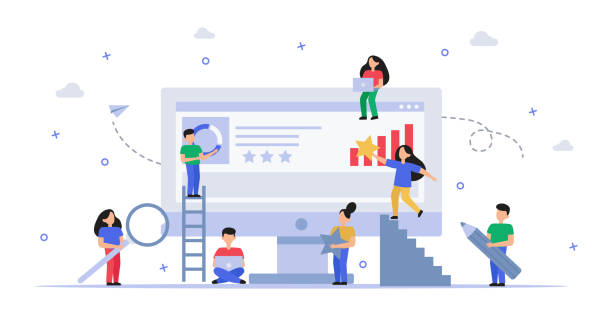
Having a multilingual website brings numerous benefits to businesses, extending beyond mere text translation and encompassing vast strategic dimensions.
The first and perhaps most important advantage is #market_expansion and access to new audiences.
When your website is available in multiple languages, you can reach customers in various countries who were previously outside your business’s scope due to language barriers.
This means a potential increase in sales, expansion of the customer base, and sustainable revenue growth.
The second advantage is increased credibility and professionalism for your brand.
A website offered in multiple languages demonstrates your commitment to serving international customers and your understanding of their needs.
This can lead to #increased_credibility in the eyes of global audiences and convince them that you are an international, reliable company that cares about its diverse audience.
The third and highly crucial advantage is improved #international_SEO. Search engines like Google, effectively index multilingual websites and use hreflang tags to display appropriate content to users in different geographical regions and with different languages.
This translates to more organic traffic, improved rankings in search results, and consequently, increased visibility for your website in international search results.
Furthermore, multilingual website design can significantly enhance the user experience (UX).
Users prefer to interact with content in their own language, which leads to a reduced Bounce Rate and increased time spent on the site.
This better interaction sends positive signals to search engines and strengthens your SEO ranking.
Finally, by leveraging multilingual website design, you can get ahead of competitors and be recognized as a pioneer in your market.
In many markets, a large number of websites still operate in a single language.
By taking the initiative and providing content in different languages, you can carve out a special place in the minds of your international customers and be recognized as a reliable reference.
This is a smart strategy for sustainable growth and success in the digital age that should not be overlooked.
Challenges and Obstacles in Multilingual Website Design

Despite its numerous advantages, multilingual website design also faces challenges and obstacles that require meticulous planning, sufficient expertise, and a comprehensive approach.
One of the most significant challenges is ensuring #accurate_and_high-quality_content_translation.
Machine translation is often insufficient and can lead to misunderstandings, loss of the original meaning, and even serious damage to brand credibility.
The need for native translators who are specialists in your field and familiar with specific terminology is essential and should be prioritized.
The second challenge goes beyond mere translation and involves deep attention to #cultural_localization.
This includes adapting content for terminology, tone, culture, currency, date formats, and even appropriate color schemes and images for each geographical region.
Failure to observe these points can lead to irrelevance, misunderstanding, or even offense to audiences, weakening your brand in the target market.
#Technical_issues are also very important and complex. Choosing the right URL structure (subfolder, subdomain, or dedicated domain), correctly implementing hreflang tags for international SEO, and managing a complex database for multilingual content all require deep technical knowledge and sufficient experience.
Performance issues with the website when loading multilingual content, such as slow speed, can also disrupt the user experience.
Additionally, managing updated content in multiple languages can be complex and time-consuming.
Ensuring that all language versions are always synchronized and up-to-date requires a robust and efficient content management system (CMS).
Technical support and site maintenance issues also become more complicated in a multilingual environment.
Finally, budgeting and scheduling for a multilingual website design project must be realistic, as this process is usually more expensive and time-consuming than designing a single-language site.
Ignoring any of these challenges can jeopardize the success of your multilingual website and render your investment fruitless.
Table 1: Common Challenges and Solutions in Multilingual Website Design
| Challenge | Explanation | Suggested Solution |
|---|---|---|
| Low translation quality | Use of machine translation or unprofessional translators | Hire native and specialized translators, use TM and QA tools |
| Lack of cultural localization | Ignoring cultural differences, currency, date, and terminology | Comprehensive research on target market culture, consult with localization specialists |
| Multilingual SEO complexity | Incorrect hreflang implementation and URL structure | Consult with international SEO specialist, use Google Webmaster tools |
| Content management and updates | Lack of content synchronization across languages, difficulty in updating | Choose a powerful multilingual CMS, establish regular update processes |
Suitable Technologies and Platforms for Multilingual Website Design
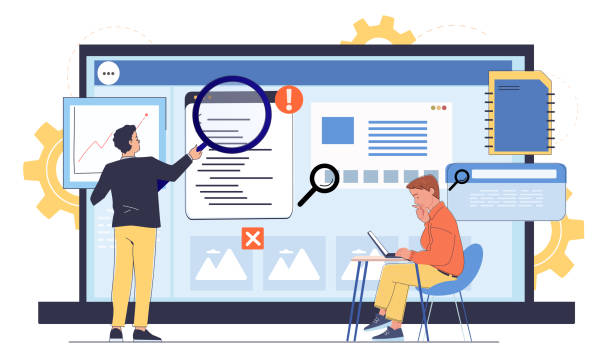
Choosing the right technology and platform is one of the most crucial strategic decisions in the multilingual website design process, directly impacting your website’s efficiency, scalability, and future success.
In this regard, the #Content_Management_System (CMS) plays a pivotal role.
Popular CMSs like WordPress, Drupal, and Joomla all offer powerful multilingual capabilities through dedicated plugins or modules.
For instance, in WordPress, plugins like WPML or Polylang allow you to manage and display content in different languages seamlessly.
Drupal inherently boasts stronger multilingual features, making it suitable for more complex and enterprise-level projects.
In addition to the CMS, selecting the appropriate #translation_plugin is vital.
These plugins not only translate text but also assist you in managing text strings, images, and even URLs for each language.
Some of them facilitate translation by human translators or even connect to professional translation services, streamlining the process.
Alongside the platform, your #site_architecture for supporting multiple languages must be carefully designed.
This includes choosing a URL strategy such as using subfolders (e.g., yoursite.com/fa/ for Persian and yoursite.com/en/ for English), subdomains (e.g., fa.yoursite.com), or country-code top-level domains (ccTLD) dedicated to each country (e.g., yoursite.ir and yoursite.co.uk).
Each of these structures has its advantages and disadvantages in terms of SEO and management, which should be chosen based on the overall business strategy.
Another technical aspect is the database. The database must be capable of storing content in different languages and be optimized to ensure fast and efficient content loading.
Also, using content delivery networks (CDN) can help improve website loading speed for users in various geographical regions.
Choosing a platform that allows for scalability and flexibility for future growth is highly important.
Investing in the right technology from the outset will prevent future problems and additional costs and ensure the stability of your multilingual website design.
Don’t have a corporate website yet and missing out on online opportunities? With professional corporate website design by Rasawp,
✅ Double your business credibility
✅ Attract new customers
⚡ Free consultation for your corporate website!
SEO Optimization for Multilingual Websites (Hreflang and URL Structure)

SEO optimization for a multilingual website has its own complexities and requires a different and specialized approach compared to single-language SEO.
The main goal of #international_SEO is for search engines (like Google) to display the correct and relevant version of your page to users in different regions and languages, and to prevent duplicate content issues.
In this regard, the #hreflang_tag plays a vital role.
This tag tells search engines which pages on your website are alternative versions of each other and for which language and/or geographical region each version is intended.
Correct implementation of hreflang (whether in the page’s head, in the Sitemap file, or in the HTTP header) is essential to prevent duplicate content issues and ensure the correct version is displayed to users, and failure to comply can harm your SEO.
Another issue is the #URL_structure, which must be carefully chosen. As mentioned earlier, the choice between subdirectories, subdomains, and country-code top-level domains (ccTLDs) has a direct impact on SEO.
Subdirectories (like example.com/fa/) are often easier to manage and maintain and can benefit from the main domain’s authority.
Subdomains (like fa.example.com) give search engines stronger signals for regional targeting but may require separate SEO efforts.
ccTLDs (like example.ir) provide the strongest geographical targeting signal but are more expensive and complex to manage.
The choice should be made based on business goals, resources, and the target market.
Additionally, #keywords must be localized and researched for each language and culture.
Direct translation of keywords is rarely effective; instead, you should research phrases that native users actually use and search for.
Ensuring that all meta tags (Title, Description) and Alt text for images are also translated and optimized is another important step in multilingual website design with strong SEO.
By strictly adhering to these principles, your multilingual website can effectively rank in global markets and attract targeted, high-quality traffic.
Content and Translation Management in Multilingual Websites

Content management and the translation process in a multilingual site form the core of its sustainability, up-to-dateness, and success.
Without a coherent strategy and appropriate tools, you will quickly become entangled in disorganization, outdated content, and additional costs.
The first step in this direction is choosing a #Translation_Management_System (TMS) or a CMS with strong and integrated native translation capabilities.
TMSs are tools that help you manage the translation process from start to finish, including sending content to translators, tracking progress, and returning translated content to the website.
These systems often work with Translation Memory and Glossaries, which help maintain terminology consistency, increase translation speed, and reduce translation costs in the long run.
The issue of #translation_quality goes beyond merely rendering words and is of vital importance. Translation must not only be accurate but also preserve your brand’s tone, culture, and core message in the target language.
For this reason, using native translators who are specialists in your field and fully familiar with the target market’s culture is crucial.
These translators can understand subtle linguistic and cultural nuances and produce content that genuinely connects with local audiences and is effective.
Establishing a clear and well-defined #workflow for content creation and updates is also highly important.
This workflow should include stages of writing, review, translation, editing, and publishing content, with each person’s role in this process clearly defined to avoid confusion.
Ensuring that all language versions of the content are always synchronized and up-to-date is one of the biggest challenges, which a good CMS and an integrated TMS can significantly facilitate.
Also, considering content that does not need translation (such as some contact information or general policies) and focusing on core and strategic content can help optimize resources and reduce costs.
Success in multilingual website design heavily depends on efficient content and translation management, and this is an ongoing investment.
The Importance of Localization Beyond Mere Translation
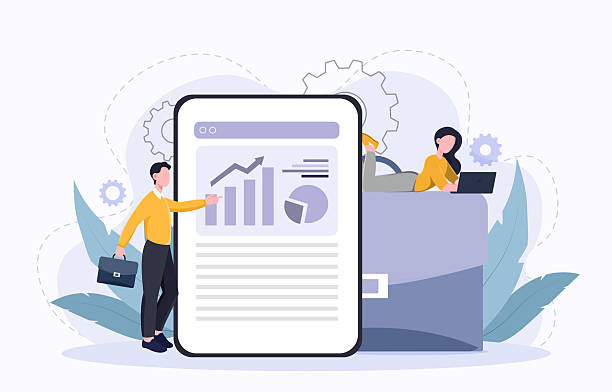
Is merely translating your website content truly enough to penetrate global markets? This question forms the heart of the #localization challenge, which goes beyond word-for-word translation and is often overlooked by businesses.
Many businesses assume that by using a translator, their website is ready to enter the global market, but this is a common and costly mistake that can damage brand credibility.
Localization means the complete adaptation of content and user experience to the culture, norms, laws, and expectations of local audiences. For example, colors have different meanings in various cultures.
A color that symbolizes happiness in one culture might be associated with sadness or death in another.
Therefore, the visual design of the website must also be localized to avoid sending an unintended message to the audience.
#Culture also influences the understanding of humor, the use of idioms, and even sentence structure.
A marketing message that is highly successful in the original language might become completely meaningless, inappropriate, or even offensive after direct translation.
#UX or user experience is also heavily impacted by localization.
This includes date and time formatting, currency, measurement systems (metric versus imperial), addressing, phone numbers, and payment methods.
Does your website support local payment methods? Are the contact form fields compatible with the required information in that country? Even images and videos must be carefully selected to resonate with local audiences and avoid stereotypes. Finally, #local_marketing is essential for a multilingual website.
This means understanding the marketing channels used in each country, local SEO strategies, and even advertising campaigns tailored to that region.
Without deep localization, your multilingual website design will only be a superficial translation and will lack the real ability to attract and retain international customers.
This is a strategic investment that determines the difference between success and failure in global markets and should not be underestimated.
Table 2: Localization Elements Beyond Translation
| Localization Element | Example and Importance |
|---|---|
| Visual design and colors | Changing the color palette or images to match specific cultural meanings (e.g., color of mourning in a culture) |
| Currency and numeric formats | Displaying prices with local currency and correct decimal/thousand separators |
| Date and time format | Using day/month/year or month/day/year format depending on local standard |
| Terminology and tone | Adapting content tone (formal/informal) and using common local idioms |
| Support for local payment methods | Integrating common payment systems in the target country (e.g., PayPal, local cards) |
| Local laws and regulations | Adhering to privacy laws (GDPR) or specific e-commerce laws of each region |
User Experience (UX) in Multilingual Website Design

User Experience (UX) in a multilingual website is a critical element for its success and goes beyond mere content translation.
Even if the content is translated into the user’s language, if website navigation is difficult or its design elements are not localized, the user will quickly leave the site, and your efforts will be in vain.
One of the first considerations in #multilingual_UX is the #language_selection mechanism.
This selector should be easily accessible and visible, usually in the website’s header or footer, and clear and unambiguous.
Using the full language name (e.g., “فارسی” instead of “فا” or “English” instead of “EN”) or combining it with a country flag (with great caution, as one language may be spoken in several countries, and using a specific country’s flag might be limiting) is recommended.
Additionally, the website should have the ability to automatically detect the user’s browser language and display the appropriate version, but always provide a prominent option for the user to change the language.
Website #navigation should be logical, consistent, and intuitive across all languages.
Ensure that the order of menus, link structure, and information hierarchy are maintained and understandable in each language version.
Sufficient space for longer texts in other languages (such as German or Finnish, which are typically longer than English) should be considered to prevent layout issues and maintain readability.
The topic of #fonts is also very important. Ensure that your chosen font correctly supports the characters of all languages supported by the website and offers good readability.
Using web-safe fonts or Google Fonts that support various languages can be a good solution.
Furthermore, Responsive Design is of additional importance for multilingual websites, as users may access your website from different devices and in various geographical regions.
Ultimately, multilingual website design should be such that the user feels the website was designed for them from the outset, not merely translated.
This includes adapting symbols, icons, and even text direction (such as right-to-left for Persian and Arabic), all of which contribute to a flawless user experience and increase user loyalty.
Are you tired of your company’s website not meeting your expectations? With Rasawp, design a professional website that truly represents your business.
✅ Increase attraction of new customers and sales leads
✅ Boost your brand’s credibility and trust with your audience
⚡ Get a free website design consultation!
Common Mistakes in Multilingual Website Design and How to Avoid Them
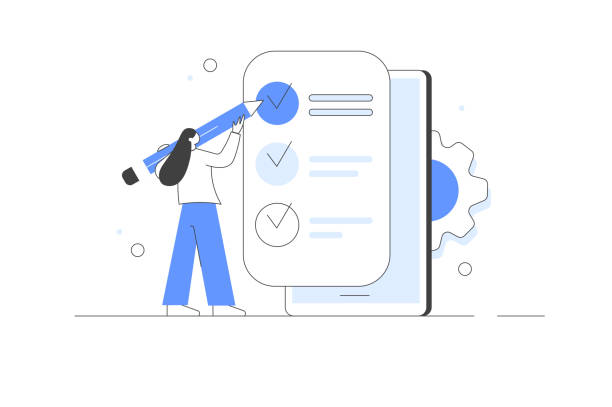
The unfortunate news is that many businesses make common mistakes in the multilingual website design process that can nullify their efforts and investments and even damage brand credibility.
Understanding these #common_mistakes and how to avoid them is key to sustainable success.
One of the biggest mistakes is over-reliance on machine translation without human editing. Although machine translation tools have made significant progress, they can never fully convey cultural nuances, local idioms, humor, and appropriate tone.
This can lead to unnatural, amusing, or even offensive content.
The solution is to always use native and professional translators and to review and finalize the translated content.
The second mistake is #improper_SEO for multilingual versions.
Failure to correctly implement hreflang tags, using incorrect URLs, or ignoring localized keyword research can prevent search engines from properly indexing your website or redirect users to the wrong version.
This means losing valuable organic traffic and visibility opportunities.
The third mistake is #incomplete_localization.
This includes not just language, but also currency, date and time formats, images, colors, local laws, and even payment methods.
Ignoring these details makes your website look unprofessional and provides a poor user experience.
Users feel that the website was not designed for them, and the likelihood of abandoning the site increases.
#Technical_problems can also be crippling. These issues include the CMS not natively supporting multiple languages, slow page loading issues in different regions due to unsuitable servers, and a lack of responsive design across various devices.
These technical issues directly impact user experience and SEO ranking.
Finally, failing to plan for ongoing maintenance and updates of multilingual content is also a big mistake.
The website must be regularly updated to keep its content fresh and relevant.
By learning from these mistakes and adopting a comprehensive approach, you can ensure that your multilingual website design project will be successful and meet your business goals.
The Future of Multilingual Website Design and New Trends
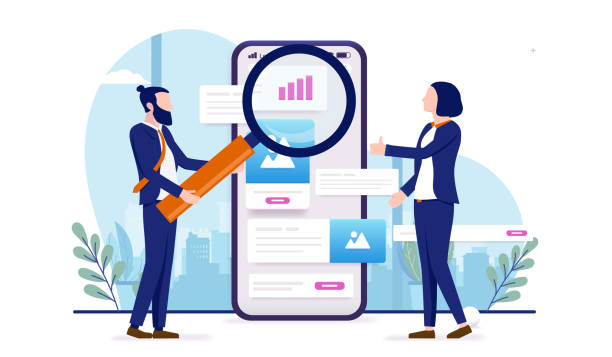
It seems the future of multilingual website design will be more exciting and complex than we imagine, moving towards unprecedented innovations.
With significant advancements in technology, we are witnessing new trends that will elevate the user experience to an unprecedented level.
One of the most important of these trends is the increasing role of #Artificial_Intelligence (AI) and Machine Learning (ML) in translation and localization.
AI not only improves the accuracy of machine translation but can also dynamically personalize content based on user behavior, regional preferences, and even their emotions.
Imagine a website that not only detects your language but even adjusts the tone and style of content based on your cultural background, providing perfectly relevant and engaging content! #Personalization will become a fundamental principle in web design, going beyond language.
Sites will be able to dynamically change content, offers, and even design elements based on geographical information, browsing history, and individual preferences.
This means a completely unique and customized experience for each user, regardless of their location and language, which will significantly increase customer loyalty.
Other emerging trends such as #Virtual_Reality (VR) and #Voice_Interaction also hold great potential for multilingual websites. Imagine being able to walk through a VR-based online store and, using voice commands in your native language, receive product information or interact with customer support.
These technologies can completely eliminate language barriers and transform the shopping or browsing experience into an entertaining and immersive adventure.
The increasing use of AI-powered multilingual Chatbots also allows users to receive support and ask questions anytime, in any language.
Ultimately, the future of multilingual website design is moving towards a completely integrated, intelligent, and highly personalized experience where language and cultural boundaries will remarkably blur.
This brings a world of new possibilities not only for businesses but also for end-users, facilitating global communication in an unprecedented way.
Frequently Asked Questions
| Question | Answer |
|---|---|
| What is multilingual website design? | The process of building a website whose content is available to users in more than one language. |
| Why should I make my site multilingual? | To reach a wider global audience, improve user experience for non-native users, and increase sales or engagement. |
| What are the methods for implementing a multilingual site? | Using subdomains, subdirectories, or URL parameters, or using different top-level domains (TLDs) for each language. |
| Which method is better for SEO? | Generally, using subdirectories (e.g., example.com/fa/) is recommended for SEO because they share the main domain’s authority. |
| What is the hreflang tag and what is its use? | The hreflang tag is an HTML attribute that helps search engines understand which version of a page is suitable for a specific language or region. |
| Is machine translation sufficient for multilingual site content? | Usually no. For a good user experience and maintaining credibility, professional translation and content localization are essential. |
| What does Localization mean? | The process of adapting the content, design, and functionality of a site to the culture, language, currency, and other specific characteristics of a target region or country. |
| What is the importance of language selection in multilingual website design? | Users should be allowed to easily choose their preferred language, usually through a clear button or menu in the site header. |
| What challenges exist in multilingual website design? | Managing content in different languages, maintaining design and user experience consistency, multilingual SEO, and translation and maintenance costs. |
| What features should a suitable Content Management System (CMS) for a multilingual site have? | It should allow easy management of content in different languages, support multilingual URL structures, and have plugins related to translation and localization. |
And other services of Rasawp Advertising Agency in the field of advertising
Placing advertisements for color-treated hair shampoos on commercial websites
Advertising shaving gels on classified platforms
Posting ads for health products with sustainable packaging in classified directories
Introducing skin-lightening cream sellers on online sites
Placing ads for honey-extract soaps on digital platforms
And over hundreds of other services in the field of online advertising, advertising consultation, and organizational solutions
Online Advertising | Advertising Strategy | Advertorials
💡 Rasawp Afarin Digital Marketing Agency, specializes in providing innovative solutions, including secure website design and SEO optimization for your business’s sustainable growth.
📍 Tehran, Mirdamad Street, next to Bank Markazi, Southern Kazeroon Alley, Ramin Alley, No. 6

